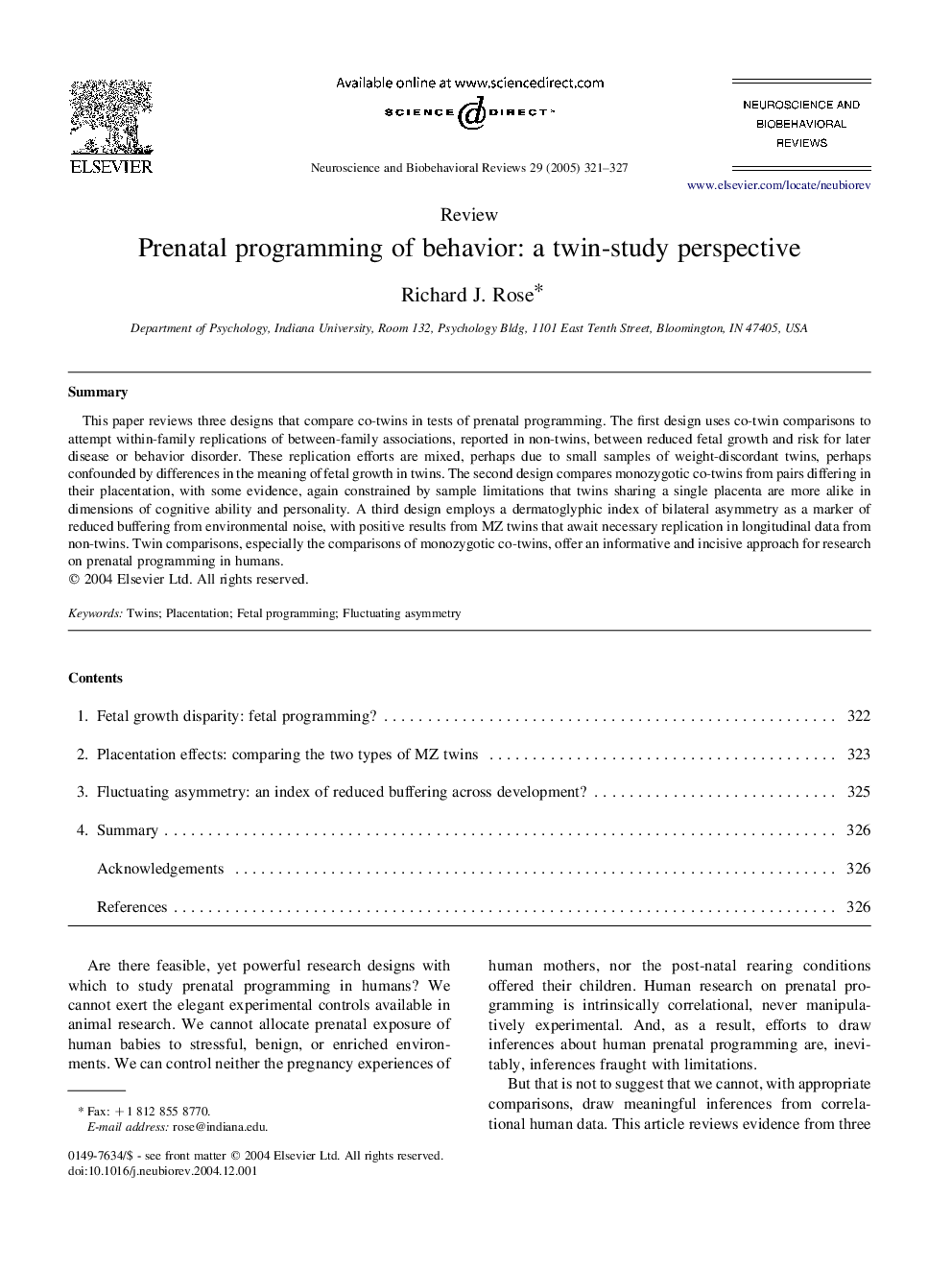| Article ID | Journal | Published Year | Pages | File Type |
|---|---|---|---|---|
| 10461953 | Neuroscience & Biobehavioral Reviews | 2005 | 7 Pages |
Abstract
This paper reviews three designs that compare co-twins in tests of prenatal programming. The first design uses co-twin comparisons to attempt within-family replications of between-family associations, reported in non-twins, between reduced fetal growth and risk for later disease or behavior disorder. These replication efforts are mixed, perhaps due to small samples of weight-discordant twins, perhaps confounded by differences in the meaning of fetal growth in twins. The second design compares monozygotic co-twins from pairs differing in their placentation, with some evidence, again constrained by sample limitations that twins sharing a single placenta are more alike in dimensions of cognitive ability and personality. A third design employs a dermatoglyphic index of bilateral asymmetry as a marker of reduced buffering from environmental noise, with positive results from MZ twins that await necessary replication in longitudinal data from non-twins. Twin comparisons, especially the comparisons of monozygotic co-twins, offer an informative and incisive approach for research on prenatal programming in humans.
Related Topics
Life Sciences
Neuroscience
Behavioral Neuroscience
Authors
Richard J. Rose,
